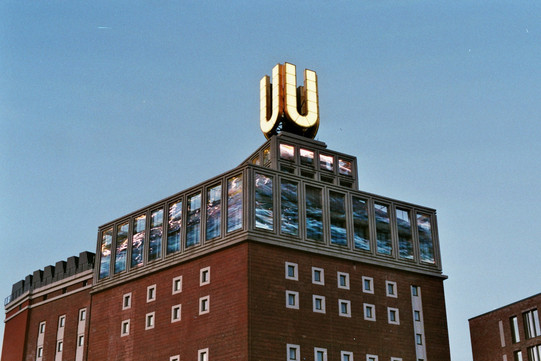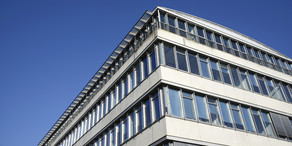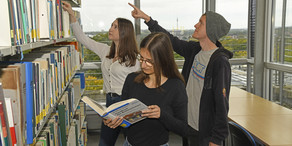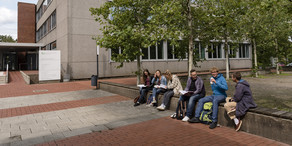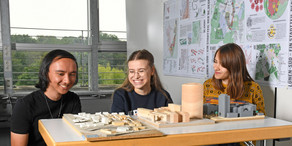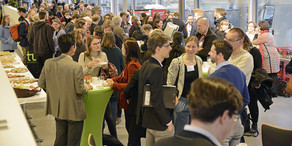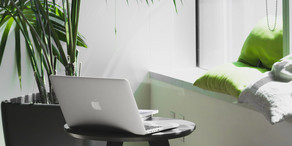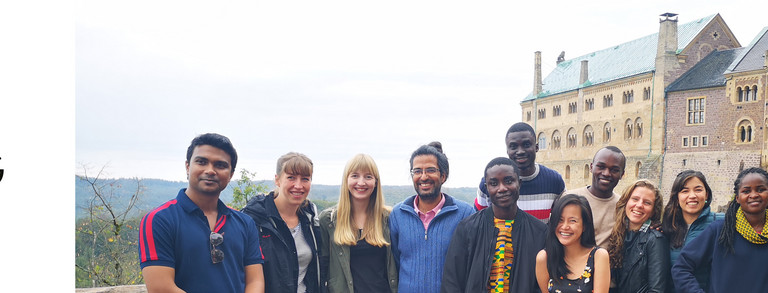Exploring Dortmund
Dortmund, located in the great Rhine-Ruhr metropolitan area and inhabited by about 600 000 people, represents Germany’s eights biggest city.
Founded around the year 882 and situated at one of the most important trading routes at that time (the “Hellweg”), Dortmund was one of the richest and most important cities of the “Hanseatic League” for a long time. Coal, steel and beer guaranteed economic prosperity beyond the middle of the past century. In the course of economic restructuring, however, new branches like IT, micro systems technology, logistics, communications- and media technology are re-shaping nowadays Dortmund’s corporate landscape.
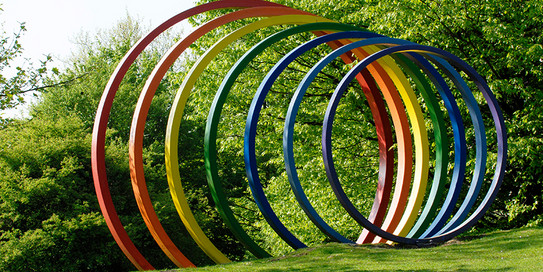
With its 52,000 students, seven universities, 19 non-university research institutes and several other scientific establishments, Dortmund represents itself as a prominent site for research and science in the Ruhr Region. TU Dortmund University, with 16 faculties ranging from science and engineering to social sciences and cultural studies, currently has near to 34,600 students and 6,200 members of staff, including 300 professors.
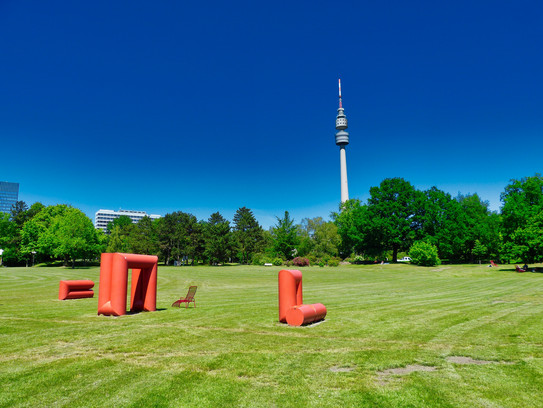
Dortmund is well known for its green belt making up almost half of the city’s 280 square kilometers. There are six major parks throughout the city of Dortmund that students frequently like to visit. Most of them are outside of the campus district, towards the city center but are easily accessible with public transportation.
One of the most favorite parks among students is the Westpark, located in the western part of the city center. It is close to the Kreuzviertel, a popular neighbourhood with a lot of bars and restaurants and therefore a good meeting place to enjoy the sun before going out. Close to the Westpark you can find the Tremoniapark, a nice public area that also offers a basketball court right at the center of the park. The biggest park in Dortmund is the Westfalenpark. Unlike the other parks you have to pay a small entrance fee of 3.50 € or 1.50 € after 6 p.m. but the composition of beautiful gardens, appealing restaurants and recreational activities (soccer and beach volleyball courts are located in the park) will make up for it. Besides that the park hosts various events throughout the year like music festivals, open air cinema and many other cultural events. Another sight of the park is the Florianturm, a radio tower and one of the biggest buildings in Dortmund, which offers a great view over the whole city. Another highlight among the parks in Dortmund is the Rombergpark, a botanical garden that is connected to the Zoo of Dortmund and offers nice green sceneries for walks and leisure time. The Fredenbaumpark is located in the north of Dortmund and is popular for its diverse mix of activities and multiple events throughout the year. At the center of the park you can find a nice lake where you can rent pedal boats and relax on the water. Besides that the park offers beach volleyball courts, table tennis, a mini-golf area, a jogging route and BBQ spots. The park is also connected to the canal, where a lot of people take their time off and go for a swim in the summer. At last, the Revierpark Wischlingen located in the west of Dortmund offers spacious lawns for playing and relaxing as well as additional activities like a public pool area, saunas, a high rope course and an ice skating area (in winter).

Dortmund is well accessible via air, water, rail and road. The airport, located at the east of the city is a medium sized, quick growing, European airport. The harbour of Dortmund is Europe’s biggest canal harbor as well as Europe’s biggest inland harbour. Dortmund’s central train station (Hauptbahnhof) is the third largest long distance traffic junction in Germany. Dortmund also embodies the function of a major European crossroad for Motorways. The Ruhrschnellweg (B1) follows the old Hanseatic trade routes and connects Dortmund with other cities of the Ruhr Area, e.g. Bochum, Essen and Duisburg. The public transport in Dortmund includes an extensive system of Underground trains, buses and cabs. The H-Bahn connecting the TU Dortmund Campus north and south is a hanging monorail shuttle system, the first of its kind in the region. As a student of TU Dortmund University you can use the public transportation within NRW for free using your semester ticket. For getting around in the city and navigating the everyday life as a student at Dortmund we would suggest you to download the Deutsche Bahn App and the VRR App. You can use it to find all regional and interregional train connections within Germany and also find the schedule for all subways and buses. The latter app only works for the Rhine-Ruhr Region but is a little more accurate for finding the correct subway and bus connections in Dortmund.
Dortmund has a lively and versatile cultural life and multiple ways to spend your time. Dortmund is a city of cultural energy and variety. As a student of TU University you have the opportunity to visit the theatre and the opera for free if the performance is not sold out in beforehand. If you like to go to concerts you should take a look on the website of the FZW (Freizeitzentrum West) which offers a broad variety of different concerts throughout the year. In addition to that, Dortmund has a lot of different museums. The most famous museums are the Dortmunder U with its different exhibitions, the German Football Museum (Fußballmusuem) or the Brewery Museum (Brauereimuseum).
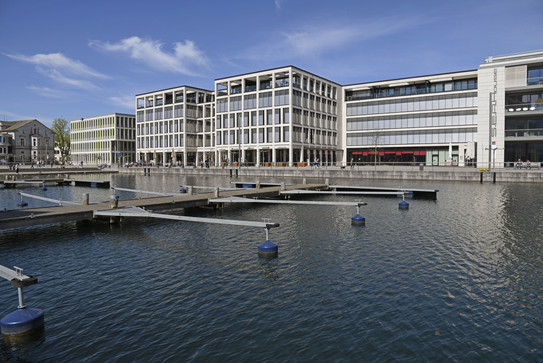
Kreuzviertel:
The Kreuzviertel is one of the most popular districts in Dortmund. It is known for its great variety of cafés, restaurants, bars and local stores. If you want to check out the Kreuzviertel, take the U42 (Hombruch) and get out either at Dortmund-Möllerbrücke or Kreuzstraße. On the weekends you can find a lot of students in the different bars and cafés. Also keep an open eye on the annual event "Kreuzviertel bei Nacht". Usually in September, all the shops at Kreuzviertel stay open until after midnight so it is a good opportunity to get familiar with district.
Nordstadt:
The Nordstadt located just north of Dortmund Hbf unifies cultures from all over the world. People from 138 different counties but also a lot of students live here. Therefore, you can find a lot of international cuisine, alternative student bars, as well as old cinemas in the Nordstadt. The Nordstadt is fairly spread out so there are different parts you can check out. Go to Münsterstraße to grab some Lebanese, Moroccan or Portuguese food. Check out the Depot at Fredenbaum Park for various cultural events or check out some popular student bars around Gneisenaustraße.
Phoenix-See:
The Phoenix-See is a 99 hectare big area in Dortmund Hörde with a lake at its heart. The Phoenix-See was part of a city development project and has now developed into a magnet for spending your leisure time in the city. While the lake is used for sailing you can also enjoy a rich variety of restaurants or use the 3,2 Km promenade to walk, jog, bike or skate along the shore.
The people of Dortmund are known to be very open minded and sociable, therefore it is easy to settle down and find lifelong friends.
